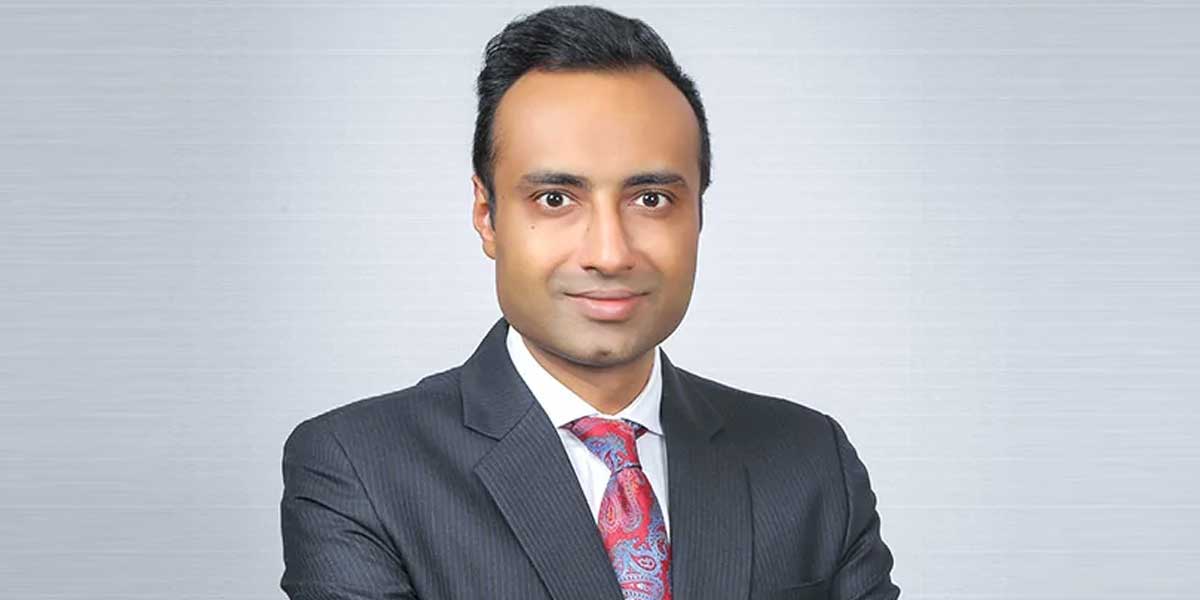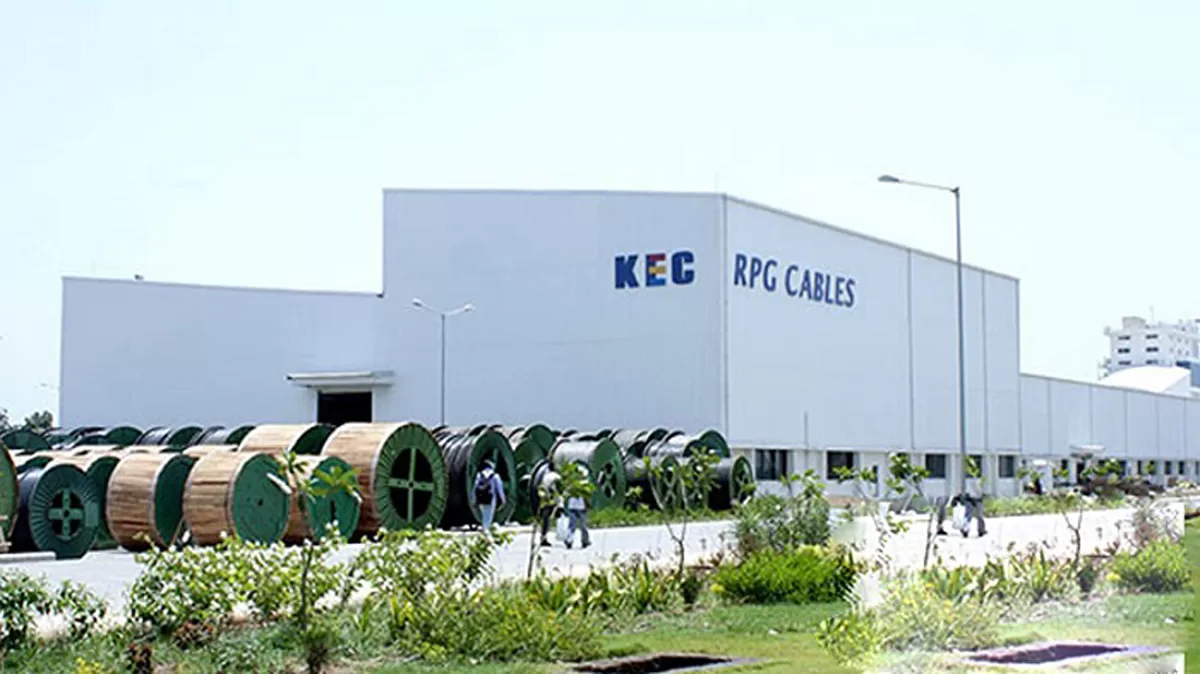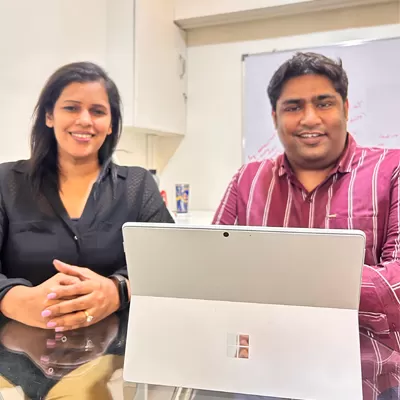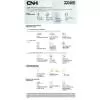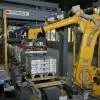One look at the Q3 FY21 financials of APL Apollo will leave you wondering—was there a pandemic? At Rs 2,321 million, the company’s EBIDTA was up 45% year-on-year while the net profit, at Rs 1,320 million, was up 78%. Interest payouts declined 41% to Rs 159 million during this period following a massive reduction in net debt, from Rs 7.9 billion (in March 2020) to Rs 3 billion.
It’s all good at APL Apollo because a master strategiser is at work, steering the company into profitable avenues notwithstanding the lockdown. In 2020 alone, APL Apollo gained a tenth of the steel tubes market, growing its overall share from 40% to 50%. Anubhav Gupta, Chief Strategy Officer, APL Apollo, shares how APL Apollo was able to sail through the pandemic, the main drivers for their high performance and more.
_________
Designated Chief Strategy Officer, Anubhav Gupta brought 12 years of investment experience to APL Apollo when he joined in 2019 with the mandate to grow the topline and bottomline. In his previous equity research analyst positions at Maybank Kim Eng and Emkay Global Financial Services, Gupta had previously helped mid-cap firms raise funds to expand as well as successfully cut their debt, skills he has avidly deployed at APL Apollo to lighten the balance sheet.
Gupta advises the management on new innovative product avenues to tap, cost control, corporate development, communications and marketing, both domestic and global. Under his astute leadership, APL Apollo has consolidated its position as India’s largest branded structural steel tubes manufacturer and one of the world’s top five players. That’s no mean feat!
Your sales rose 22.53% to Rs 2500.21 crore in the quarter ended December 2020 as against Rs 2040.45 crore during the quarter ended December 2019. Your net profit at Rs 132.04 crore in Q3F21 was up 77.81% from Rs 74.26 crore in Q3FY20. Which demand segments are driving these better results?
When the lockdown happened in March we made it our policy to go aggressive on rural markets. During the lockdown, we saw 150 million working people migrate from cities and towns to semi-urban and rural areas. We were very clear that the rural economy will outperform the urban economy in the rest of FY21 because we knew that those migrants would not sit idle in their native places. Also, the lockdown was not imposed as harshly in rural areas as it was in urban areas.
We revitalised our entire rural distribution network and went very aggressive on pricing and servicing as well on the addition of new distributors. This is what delivered us a benefit in FY21.
Secondly, unorganised, smaller, unbranded players suffered a lot during the lockdown. As it is, the unorganised sector has been going slow since 2016 when demonetisation was announced, then came the implementation of GST, then the overall banking crisis, and finally the lockdown. All these four factors have impacted the unorganised sector in a big way. We were able to capture some of the market share of smaller players. [So much so that] our market share has improved from 40% to 50% in the last nine months. Incidentally, this phenomenon (larger players taking over the share of smaller players) is visible across the building material industry not just in structural steel tubes.
Thirdly, we have been aggressive on the pricing front. That has also helped us boost our market share. Without compromising on our margins we took on many cost control measures during the lockdown. So our pricing became a bit more competitive. We passed on these gains as sweeteners to distributors.
Did you also consider offering discounts to end-users?
No. Our brand is strong in users’ minds.
Which products were you aggressive on?
The main drivers for our high performance in Q3 FY21 were structural steel in the lighter sections (we call them light structural tubes) and Apollo Z pre-galvanized tubes.
Equity analysts are now forecasting revenue of Rs 99.8 b for you in 2022, 28% higher than your Rs 78.24 b revenue for the year ended December 2020. This would mean that you will grow faster than your historical 15% pa growth over the past five years and faster than other companies in your industry (forecast to grow at 9.9% per year). Is this your expectation too?
We have never grown at 15%. If you look at our last five years figures, we have been grown at more than 20%. See, FY21 was a washout because of the lockdown. It was obviously going to be flattish versus FY20 and as a result, FY22 will be seen to be strong. We might grow faster than what we have grown in the last five years but then the GDP is also expected to grow at a fast pace in FY22. That ripple effect will be felt in the construction and building material industry, so yes, we are excited about next year.
Why are you growing faster than others in your industry?
I would put that down to our product range. We continuously innovate and bring out new sizes and new shapes of steel tubes for multiple structural applications. Today we have 1,500 SKUs which no other company has. In innovating new sizes and shapes of pipes we create a market for ourselves. For example, our steel tubes have replaced conventional products like wooden structures, aluminum profiles, concrete RCC, steel angle channels and pre-engineered building structure components. When you create a new market you capture 100% share.
At Apollo APL innovation is ongoing. It is the ‘x’ factor in our group in comparison with our competitors. It has helped us create new markets and increase our SKU range.
The second factor is our distribution network. It has improved our serviceability to distributors. Supply chain is something anyone can control.
I would also attribute our growth to technology in which we have invested a lot. Our mills are from Japan, Italy, China and USA. We have more efficient mills where the production loss is minimal. They are highly automated, which facilitates faster production.
We have imported DFT technology which helps us make square and rectangular tubes directly unlike the conventional way of first making a circular pipe and then press molding it to make a square pipe. So we can manufacture more quickly and efficiently and improve our serviceability to distributors. We can dispatch products within 48 hours of receiving an order—any customised size required by clients. Our investment in technology to improve our serviceability to distributors is unmatched. Other players tend to take 1-2 weeks at least to fulfill orders.
To what extent has your product mix influenced your sales? You sell regular tubes and also various architectural steel products such as fencing, elliptical tubes, etc. How are the regular and special segments performing?
In our architectural range doorframe tubes have been very popular, our bestseller since they were launched in 2019. We have fencing tubes and planks; these are gaining momentum and popularity. Of course these require a lot of education to be imparted to fabricators and end-users, and that exercise was on hold because of Covid, we organise those meets in cities. Once these events start to gain momentum and we resume the education of fabricators about the applications of these high value products they will also start contributing significant volumes.
How were you impacted by the scarcity of raw material (steel) in F21?
We are the largest steel tube company in India. We buy almost 2% of India’s steel production. Our relationships with steel majors are very strong. So we got whatever we were committed but of course, if there was no shortage in the market we could have bought more and sold more. Our performance would have been better.
How have you achieved higher operating cash flow for 9M FY21 (Rs 8.5 bn versus Rs 5.1 bn in FY20) and cut your debt in Q3FY21? How has this benefited you?
In our March 2020 balance sheet we had Rs 780 crore debt on the books, this was majorly working capital debt. Our working capital cycle was around 25 days. Even that was pretty good if you look at other building material industries like PVC pipes, tiles, paints, adhesives, electricals, etc. So it was still one of the best in the industry. But after the lockdown we were highly concerned on the receivable front, so that is where we worked very effectively. We shifted our business from the 20-25 days receivable mode to the cash mode where we started to get spot payments from customers. That really brought down our receivable days and also on the inventory front, we worked hard to become more efficient to churn out raw material inventory. So that also brought down our inventory days, and we could cut our net working capital cycle to below 10 days. It threw up a lot of operating cash, which has been used to bring down debt, which in December 2020 stood at Rs 200 crore. When debt is eliminated your interest cost is reduced so your EBIDTA, your net profitability improves significantly. Now we have a lot of funds for capacity expansions in our new Raipur facility. It is very good to have low debt or zero debt on the books.
What changes would you like to see in India’s steel policy and why?
We don’t have much expectation from the steel or metal authority / ministry because steel is a global commodity. It is bought and sold in free markets globally. So I think the government should let steel be. Steel is totally deregulated. I think that works fine for the industry because ultimately it is all based on global supply and demand mismatches. That is how steel prices move up or down. I think the government has been fair.
What the government can do better is boost production. It is disheartening to see iron ore being exported to other countries and those countries processing that iron ore to make steel and then exporting that back to us. We should we able to process our mineral resources iron ore and coal to make steel. This would boost the overall steel sector and generate employment. We are pretty sure that the government is taking the necessary steps. A bit more focus on mineral processing and steel production would help the overall economy.
With the approval of the merger of Shri Lakshmi Metal Udyog and Apollo Tricoat with APL Apollo, what impact do you see on the performance of the consolidated company?
We’re not expecting much impact. Apollo Tricoat is already 56% owned by APL Apollo. Shri Lakshmi Metal Udyog is a wholly owned subsidiary. In any case we were doing line by line consolidation into our P&L and Balance Sheet. So till the net profit before the minority interest consolidation was 100%. Just the minority interest that used to get deducted from the bottomline will now remain in the P&L. So our net profit will grow by 12-13% over nine months. At the same time, there will be new capital increase in APL Apollo because of the share issue to Tricoat shareholders. That dilution is around 10.9%. So, overall, my EPS (earning per share) will grow by 2.5% if you look at nine months financials. As far as the balance sheet is concerned line by line consolidation for net worth, debt, working capital was already happening. But minority interest will come into the liability side, which will boost my ROE.
For APL Apollo, in terms of financials, the benefit is not significant. But for Tricoat the benefit is that it will be part of APL Apollo which will give it a stronger balance sheet, stronger cash book, etc. So, the expansion of Tricoat products across India will be much faster. As for the group, now we are a single structural steel tube giant with 2.6 million capacity, which puts us among the top 5 steel tube producers globally. We are happy with this arrangement. We are a single entity, single structural steel tube giant.
Yes, once the merger is complete we will gain two synergies. We will be able to rollout Tricoat products faster. We can start producing Tricoat products across APL Apollo plants. Otherwise Tricoat had only two plants—one in NCR and one in Bengaluru. Tricoat products could be produced in APL Apollo’s Mumbai plant, Raipur plant. So you suddenly become a pan India player.
There is that much demand in the market?
Yes.
Also, when the companies are merged we will see how we can optimise production. Some mills might be shifted here and there. Putting APL Apollo and Tricoat together, we have four plants in the NCR region, three plants in Bengaluru, so definitely, we will see some consolidation at the plant level.
Would this merger impact your customer segments?
Not really. A lot of distributors were common for Tricoat and APL Apollo so we don’t see much change in our distribution strategy.
Would the merger help rationalise costs?
There will be some cost savings in the distribution cost and go-to-market cost. Now with the common platform there would be fewer visits to distributors, so that will help optimise some distribution costs. As for the go-to-market costs, we spend a lot of money on fabricator education. So far APL Apollo has done its own meets and Tricoat has done its own meets. Common meets will save some costs too.
What management changes will the merger usher in?
None. Tricoat was working on a lean structure. The majority of employees were in the plants. The two plants are being retained. On the sales side and marketing distribution side the team will get absorbed in APL Apollo.
